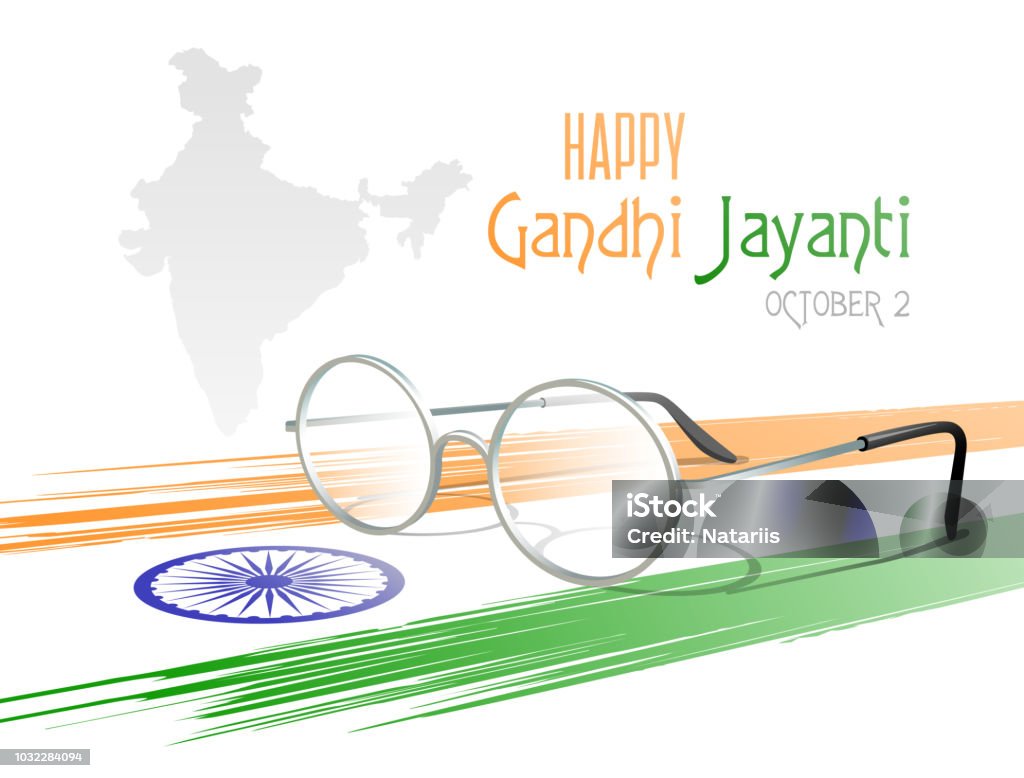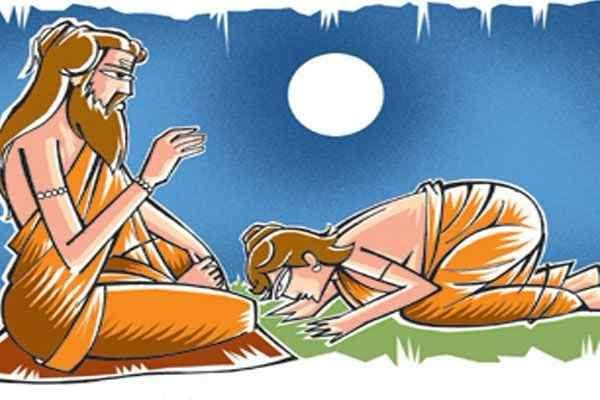ENVIABLE CONTEMPORARY KERALA : RESULT OF MOVEMENTS Khagendra Kumar
- Post By PoliticIndia.com on
- 2013-11-12 18:06:35
INTRODUCTION
Kerala as a state within the union of India, came into being on 1st November 1956 as a result of the States Reorganization Act (1956). Soon after the formation of the state, Kerala elected a communist government. It became the first state or province within a federated country anywhere to elect a communist government. Kerala is widely known for the extremely complex system of caste organization that existed there until the beginning of twentieth century. We shall see later in this article traditional Hindu society structure and Sree Narayana Guru Movement that challenged the oppression of the lower untouchable castes. The success of this social movement can be seen in the considerable reduction of caste system in modern Kerala. Although Kerala occupies only a little over one percent of India's land area, its more than 30 million people is the 12th largest of the Indian States and Union Territories. Its average population density is nearly three times of national average. Female population exceeds male population. One hypothesis claims that the absence of female infanticide and the higher social status of women account for this unique feature. Hindus account for 82.6 percent, Muslims 11.4 percent and Christians 2.4 percent of the population in India. In Kerala, however, Hindus constitute 61 percent, Muslims 18 percent and Christians 21 percent of the population. Kerala was declared a totally literate state on the grounds that it was close to the norm of 95 percent literacy way back in 1991. Social movements of the 19th and the 20th centuries like Library Movement, Teacher Movement besides Sree Narayana Guru Movement played significant roles in making people of Kerala aware of the importance of education. Later on many voluntary organizations particularly Kerala Sastra Sahitya Parishad (KSSP) worked in close coordination with the government and provided workforce to educate illiterate adults to achieve universal literacy in the state. KSSP gradually took the shape of people's movement and emerged as a powerful People's Science Movement (PSM) in Kerala. Today KSSP is the largest PSM of India. Land Reform Act was passed in Kerala way back in 1969 which helped in reforming the oppressive peasantry system of the state. This reform was the result of peasant stuggles which continued for over hundred years. This movement has made significant impact on reducing economic disparity in Kerala. Today Kerala is supposed to be a progressive state of India. It commands high respect within the Indian territory and abroad. A series of movements helped in reforming Kerala's society to the extent none of the Indian states could achieve. Some of these important movements have been described below. The social, reform movement initiated towards close of the nineteenth century by Sree Narayana Guru is supposed to have made a significant impact on Kerala's society. This movement which was mainly, a revolt against the existing social order wherein casteism played a dominant role in segregating various communities helped to bring in a new social order in which casteism for all practical purposes was liquidated and social cohesion increased among various communities of Kerala. It also exhorted the socially disadvantaged sections of the society to educate themselves for overcoming social disabilities. It was perhaps due to this that subsequently several struggles of the 'Backward' communities in Kerala were related to their demand for right to education. The Library Movement and Teachers' Movement in the forties of the last century reinforced and emphasized the importance of education in social reforms. These movements were further strengthened by the peasant struggles against exploitative forces for the first time. The author made a brief study of Sree Narayana Guru Movement, Library Movement and Peasant Movement in order to get some ideas of the then existing social disparities in Kerala and their changed status.
Sree Naryan Guru Movement
The then existing traditional Hindu social structure of Kerala would be of some help to understand the nature of Sree Narayana Guru Movement. The traditional caste system had the Nambutiris at its apex. Though they formed a minority of the Hindus, they occupied a distinct position in the social order. All of them were landlords (Janamis) and wielded power in the society. Then came Nairs in the social hierarchy who formed an economically and politically powerful group. The Nairs represented roughly eighteen percent of the Hindu population. Though, the Kshatriya caste represented by a few erstwhile princely families was nominally present, bulk of those who carried on Kshatriya profession were drawn from Nairs who were perceived as a Sudra caste. As hereditary heads of villages and Kingdoms, the Nairs managed most of the lands as customary owners (as Janmis) or held the land on cultivating tenure from Nambutiris (as Kanam.) The third group within Hindu system were those of untouchables including the Ezhava who were the single largest community consisting of around twenty five percent of the total Hindu population of Kerala. Their traditional occupation was toddy tapping. Most of them were cultivating tenants. (Lieten, 1982, pp. 3-5) The castes were rigidly exclusive and there was no common social life amongst them. Untouchability was practised so systematically as to keep the untouchables in segregation. An Ezhava had to keep himself thirty-six feet away from Nambutiris and sixteen feet away from the Nair. There were places in each village where low castes were prohibited to enter. These included not merely high caste temples but also certain public roads entry of low castes on which was supposed to cause pollution for the higher castes. Restrictions were placed on the movement of these low castes that they could not even walk near a high caste temple transgressing the distance of pollution attached to them. On seeing a person of high caste they were obliged to salute them with shivering body and bowing downward in a particular way (Rao, 1957, pp. 19-23).. Sree Narayana Guru born in 1856 in an Ezhava family at Chempazhanti near Trivandrum, made a careful study of Hindu religious and philosophical works and formed his own ideas on Hinduism. He undertook the task of bringing together the different sections of Ezhava community on a common platform. Closely associated with the Sree Narayana Dharma Paripalan Yogam (SNDP) the representative organization of Ezhava, Guru gave to the Hindu religious movement in Kerala a social context and practical turn. In the words of Remain Rolland. He preached if one may say so, a jnana of action, a great intellectual religion having a lively sense of the people and their social needs. It has greatly contributed to the uplifting of the oppressed classes in southern India and its activities have measure allied to those of Gandhi, (quoted in Menon 1979, p. 203) Sree Narayana Guru set up shrines dedicated to Lord Shiva, as a parallel system to that of caste Hindus who denied entry to Ezhavas in their temples. The Harijans and other lower castes were allowed entry into these temples in which Ezhavas, not Brahmins, officiated as priests. The religious revival initiated by Sree Narayana Guru contributed to a great deal to the promulgation of the famous Temple Entry proclamation of November 1936. Sree Narayana Guru persuaded the Ezhavas, the Harijans and others to give up the animal sacrifices to which they freely resorted to in the name of religion. He encouraged them to take western education and to industrial and commercial pursuits so that they too could acquire material wealth and improve their standing in the social scale. Sree Narayana Guru also stressed the fundamental unity of the human race and took the view that religion should not consist of external and meaningless practices and rituals. He enunciated the famous dictum 'one caste, one religion, one God for man' (one Jati, one Matam, one Daivan marushyanu). (Menon, 1979, p. 204.) Another famous saying of the Guru was 'What ever be one's religion, it is enough if the individual becomes good' (ibid pp. 204-5). According to him the basic objective of every religion was to elevate the moral character of the individual and hence no religion or caste was inferior to any other. He also advocated inter-marriages between different castes as a means of achieving social cohesion and evolving caste free society. He emphasized tolerance and goodwill among the members of all communities. He said : The greatest science man can study is the science of living with other man. There is no other thing so taxing and requires so much wisdom, so much practice, as how to live together. There is no art finer than the art of being at peace with one's neighbours (Ibid p. 205). This movement had a powerful impact on Kerala's society and almost eroded the caste rigidities. Although the movement faced initial resistance from Brahmins but finally it succeeded in increasing the social cohesion among Brahmins and lower castes of the society. Many Brahmin disciples of the Guru worked for this reformation movement. Later on the ideas of the Guru were popularized by many Malayalam poets and writers. This was the first powerful social reform movement in Kerala which not only helped in liquidating the caste rigidities but also subjected its people to look into social problems rationally.
Library Movement
During forties of the 20th century, Kerala also developed a unique Library Movement. This movement was started by Grandhasala Sangham, the pioneer of voluntary movement in Kerala. The movement succeeded in inculcating the reading habit among all age groups. Grandhasala Sangham brought into existence over 3,700 libraries in Kerala with a total collection of more than 6.7 million books and an active membership of some 600,000 persons. There were two libraries per village and approximately one library for 3,000 of literate population. Today there is one library per two square miles and as many as two thousand libraries are housed in the personal residences of voluntary workers of the sangham. These village libraries are also cultural centres and centres for discussion of public matters (Mammon, 1981, p. 35). The Library Movement brought greater understanding of various social problems among the literate population. It also provided them with a platform to discuss various public matters and exchange their views. The success of Library Movement raised the confidence of educated people to carry out voluntary action in solving social problems. The Library Movement is now perceived as one of the major movements which strengthened the social awareness of the literate masses of Kerala and induced the growth of voluntary movements in the state.
Peasant Movement
The peasant struggles too gave the people of Kerala first lesson in class unity and organization. The peasant struggles which brought an end to the oppressive tenancy system of Kerala continued for more than a century in various forms (1836-1956). The struggles in the first phase (1836-1921) were by the lower Mappila tenants but not by their Hindu counterparts. According to Radhakrishnan, the struggles of Mappilas were the results of a combination of (i) inheritance of militant tradition, (ii) crystalization of an independent communal identity and (iii) increasing disrespect for traditional Hindu institution. These factors precipitated by the Mysorean occupation of Malabar, decline in socio-ecnonomic conditions and further embitterment of relations with Hindus as a consequence of British policy (Radhakrishnan, 1989. pp. 268-69). The struggles were concentrated in south Malabar simply because of concentration of Mappila population in the region. The struggle was contingent upon the religious background of the Muslim agitators and that of their Hindu oppressors, Mappila could see a particular Janami as his oppressor i.e. Nambutiris, but not the Janami system or the bureaucracy which supported it (Namboodiripad. 1968 p.1) .The lack of proper leadership, ideology and modern education among Mappilas were some of the limiting factors of Mappila struggle despite these limitations the struggle was protracted for about eighty years. The initial voice of protest against the oppression of the peasantry by the Janamis and the earliest expressions of the pressures from below for changes in agrarian relations through land reforms were laid down (Ibid). In contrast to the first phase of struggle, the second phase (1920-30) was by the upper Hindu tenants. The emergence of this struggle was the result of the spread of English education in the Malabar regions and the rise of professional middle class among the Nayars consisting of government servants, intellectuals journalists, lawyers and so on. The class took upon itself the leadership of the struggle as one of the expressions of their growing disenchantment with Nambutiris.These struggles were relatively more effective because the leadership was in the hands of intelligentia. Within a decade the government conceded most of the the demands. But as the demands were mostly of the Kanam tenants, the beneficiaries of the resultant land reforms were mostly upper stratum of tenancy and not the vast masses of the lower tenancy. Despite this, it was the first organized struggle in Kerala. Unlike the struggles in the first two parts those in the third phase (1930-56) were mostly by the lower caste Hindu tenancy (Verum-pattam). The third phase of struggle emerged due to a number of factors such as rise in the tempo of nationalist movement during thirties, deterioration in the economic condition of peasantry and finally the emergence and growth of leftist movement (Radhakrishnan. 1989, p. 70). Third phase of peasant struggle persisted for about forty years and secured to the peasantry more and more concessions from Janamis. The and ownership was provided to lower caste Hindus mainly because of the painstaking organizational efforts of the initial years leading to the growth of 'Karshaka Sangham' as a well structured and broadbased mass organization bound with anti-Janamis and anti-government nature of the struggles through effective and appealing methods. These included mass meetings, processions, conferences, study classes, social boycott of the Janamis and the government, intercaste dining, hunger songs, hunger jatha, defiance of customary authority, streetplays and occasionally even direct action. With the emergence of the Communist Party, the struggles became stronger, more militant and clear-cut in their objectives. With the formation of Kerala state and emergence of Communist Party as a major political force which championed the causes of peasantry, the struggles were further consolidated and politicised and assumed a statewide character. Communist Party of India CPI (M) came to power in April, 1957 and committed itself to the abolition of landlordism. But this government remained in power only upto 1959 and could not fulfill the commitment. In 1964 Communist Party was divided into CPI and CPI (M). In 1967 CPI (M)-led United Front Government came in power and passed Kerala Land Reforms (Amendment) Act in 1969 which abolished traditional landlordism which was viewed as the culmination of the peasant struggle (Issac. 1988, pp. 10-11). The peasant struggle was joined by different classes of the people in phases. Lower Mappila tenants first came on the scene. They perceived the problem partially and due to certain limitations described earlier, could not achieve much even after very prolonged protest of nearly eighty years. The second phase of the movement was run by upper Hindu tenants. They were better educated class and achieved success in comparatively shorter period of ten years through organized struggle. The third phase involved vast masses of lower Hindu tenants. This phase saw the emergence of a mass organization 'Krashka Sangham' which fought against the oppressive tenancy as a whole. They also adopted better methods of communication in order to make people aware of the problem and oppressive tenancy system as a whole. The peasant struggle which prolonged for more than a century helped the people of Kerala to understand the importance of education, mass organization and effective means of communication in meeting the challenges posed by the oppressive forces existing in the society. The land reforms brought an end to the traditional tenancy system and helped to reduce the economic disparity in the society. The importance of land reform can also be seen as a prerequisite to social awakening towards other disparities and exploitative forces existing in the contemporary society. The successful end of peasant struggle in sixties saw the emergence of a number of organizations. People's Science Movement in Kerala also emerged during this period (Issac, 1985.)
KERALA SASTRA SAHITYA PARISHAD (KSSP)
A peoples science movement (PSM) known as KSSP emerged in Kerala in sixties. Now KSSP is the largest PSM of the country. KSSP is a people's organization with a decentralized democratic structure and mode of functioning. The prevalent mode of interaction among its members is horizontal. KSSP is an apolitical organization. Its main concern is to bring science to the common people. KSSP is operating in the field of environment, ecology, health, resource management, women's issues, national integration etc. All the activities of KSSP were social and meant for changing values and life styles of the people through mass mobililzation. KSSP is trying to democratize knowledge. In other words, KSSP is trying to achieve the participation of common people in the knowledge. It was trying to liberate knowledge and take it to the common people at grassroots level. The science and technology are being used in such a way that they lead to many problems like pollution, deforestation, ecological imbalance, health hazards etc. which affect the people for no faults of their own. The KSSP is generating awareness among the people to build up a new relation in which science and technology could be used with all considerations for the nature and the people. The KSSP's means of mobilization of masses were lectures, seminars, publications, processions, and various performing arts like street plays, songs, folk dances etc. The end of KSSP's efforts were changed scientific attitude and awareness towards various social problems which might perhaps be reflected in changed values of the society and life styles of the people. The means and ends were purely social. The movement has nothing to do with the acquisition of power as is the case with political movement. KSSP though identified as People's Science Movement has achieved the status of a new social movement which has helped in making Kerala's society more progressive, rational, scientific and of course more peaceful and livable. The description of the above four movement Sree Narayana Guru Movements; Library Movement, Peasants, movement and KSSP gives us some ideas of the importance of movements as powerful instruments of social change. These movements removed various social disparities which may hinder the emergence and growth progressivism in tne society. They made the people aware of social problems and ways to deal with them. The advantages of the above movements can be summarized in the following points: (i) Sree Narayana Guru Movement reduced the caste rigidity to a great extent among the Hindus. The caste ridden Hindu society became more cohesive. (ii) It also made the people of lower caste aware of modern education and industrial and commercial activities for social and economic uplift. (iii) The Library Movement increased the people's awareness towards various problems they faced. (iv) The success of Library Movement, the first voluntary movement of Kerala, provided reinforcement to the educated class for further voluntary work. (v) The peasant struggle of Kerala proved the importance of mass organization in fighting exploitative social forces and unjust institutions. (vi) The land reform helped in modernizing agriculture and reduced economic disparity. (vii) KSSP helped in making the society progressive, rational, scientific and peaceful achieve much even. Finally it can be said that when institutions controlled by governments fail to check people's exploitation and to measure up to their expectations for a fairly long time, people try to transform those institutions through direct participation leading to various movements. From above description of Sree Narayana Guru Movement, Library Movement and Peasants' Movement of Kerala it can be inferred that people's direct and peaceful action helped in fulfilling their expectations to a great extent. Hence movements are ultimate sources of social change.
REFERENCES : l Issac, T. M. Thomas and B. Ekbal. 1988. Science for Social Revolution: The Experience of Kerala Sastra Sahitya Parishad(sic.). Trichur: KSSP l Kumar, Khagendra. 2000. Understanding A People's Science Movement : Patna : Janki Prakashan. l Lieten, G. K. 1982. The First Comimunist Ministry in Kerala, 1957-59. Delhi : Delhi University. l Mammom, P. M. 1981. Communist Vs. Communism. Calcutta: Minerva Associates. Menon, A. Sreedharan. 1979. Social and Cultural History of Kerala. New Delhi: Sterling. l Menon, A. Sreedharan, 1979. Social and Cultural History of Kerala, New Delhi : Sterling. l Namboodiripad, E. M. S. 1968. Kerala: Yesterday, Today and Tomorrow (second edition). Calcutta : National Book Agency. l Radhakrishnan, P. 1989. Peasant Struggles, Land Reforms and Social Change in Malabar 1836-1982. New Delhi: sage. l Rao, M. S. A. 1957. Social Change in Malabar. Bombay : Popular Book Depot. (first published in People's Dialogue on Education, Vol 1&2, May&October, 2010)






